Abstract
Qualitative and quantitative aspects of the mechanisms involved in the regulation of cytoplasmic pH during an acid-load have been studied in Acer pseudoplatanus cells. Two main processes, with about the same relative importance, account for the removal of H+ from the cytoplasm, namely a `metabolic consumption' of protons and the excretion of protons or proton-equivalents out of the cells. The metabolic component corresponds to a change in the equilibrium between malate synthesis and degradation leading to a 30% decrease of the malate content of the cells during the period of cytoplasmic pH regulation. Various conditions which severely inhibit the activity of the plasmalemma proton pump ATPase reduce, at most by 50%, the excretion of H+. This suggests that, besides the plasmalemma proton-pump, other systems are involved in the excretion of proton-equivalents. Indirect information on qualitative and quantitative features of these systems is described, which suggests the involvement of Na+ and HCO3− exchanges in the regulation of cytoplasmic pH of acid-loaded cells.
Full text
PDF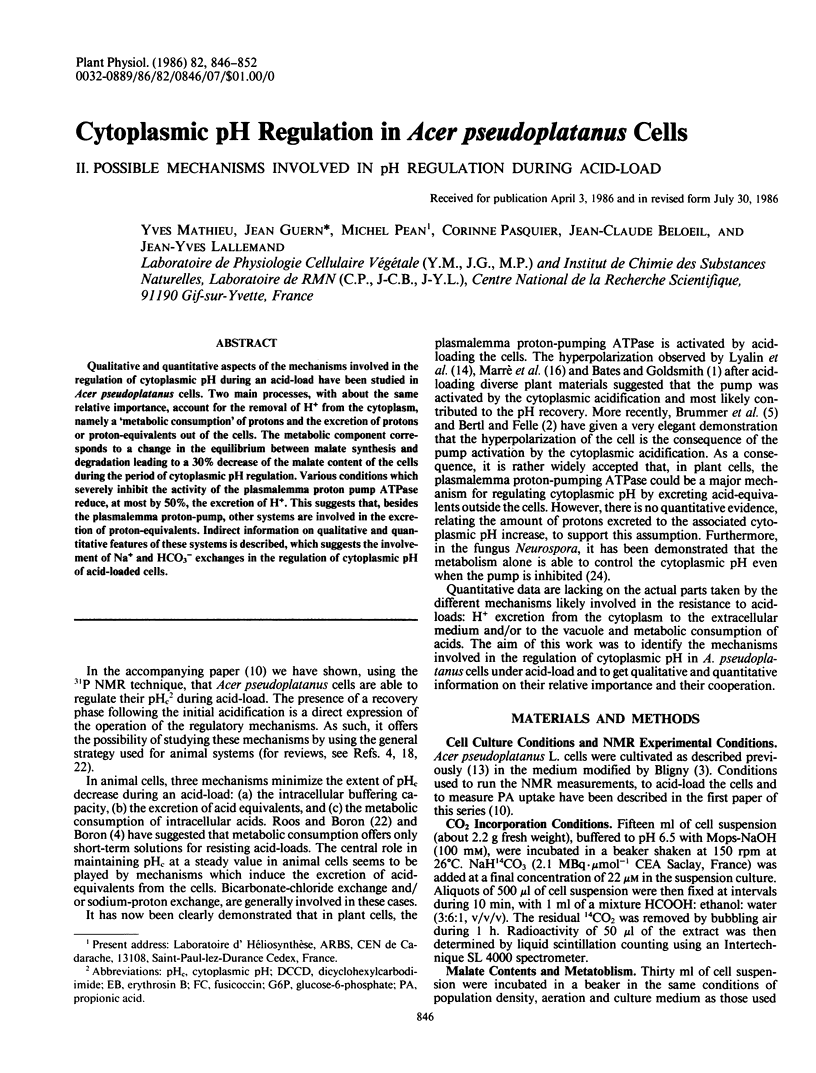
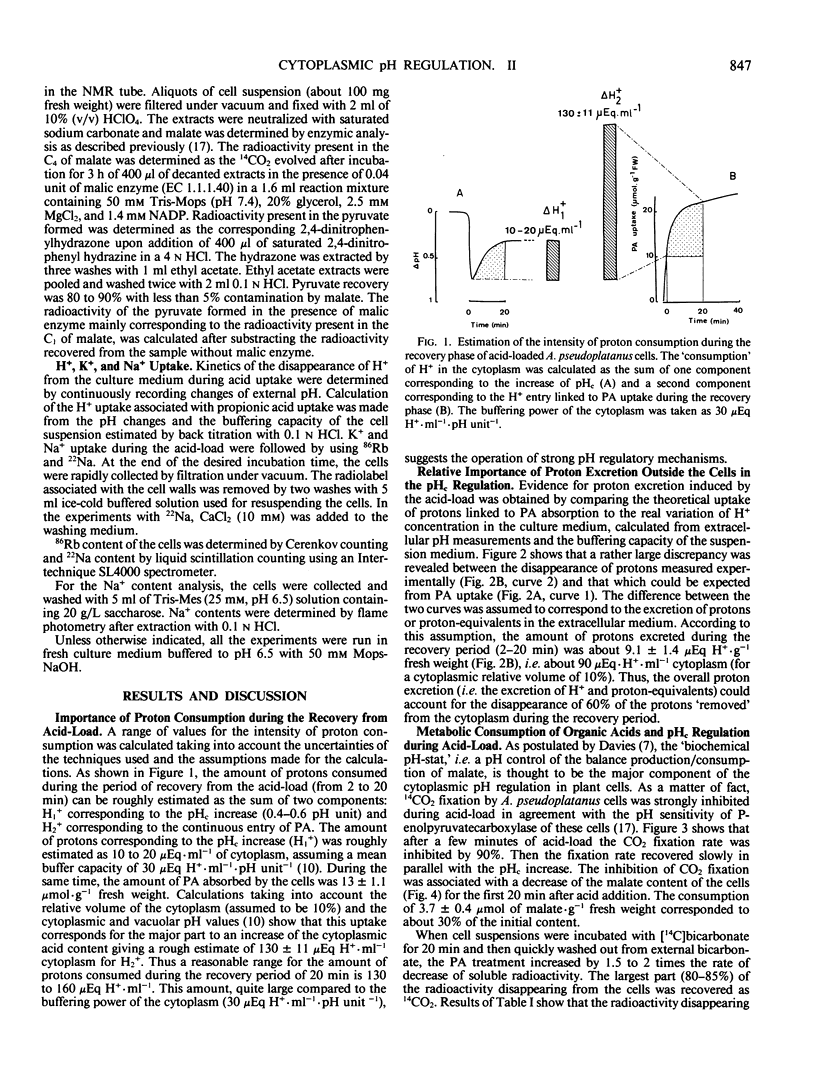
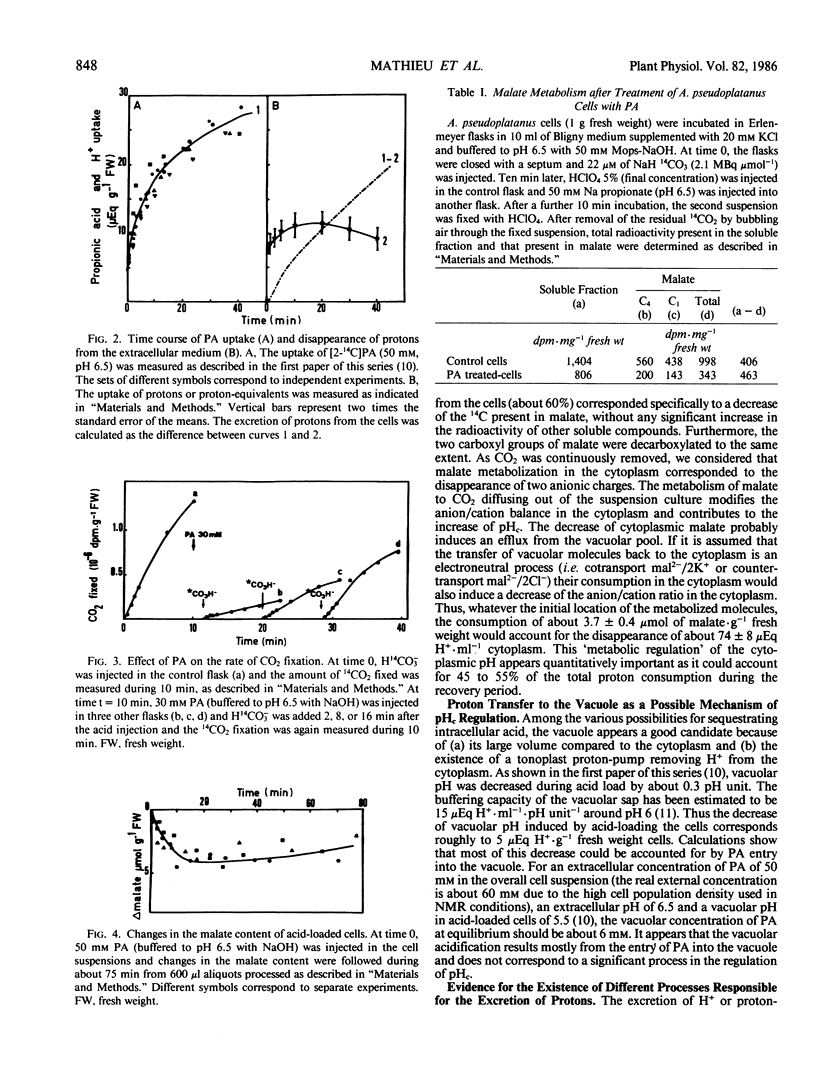
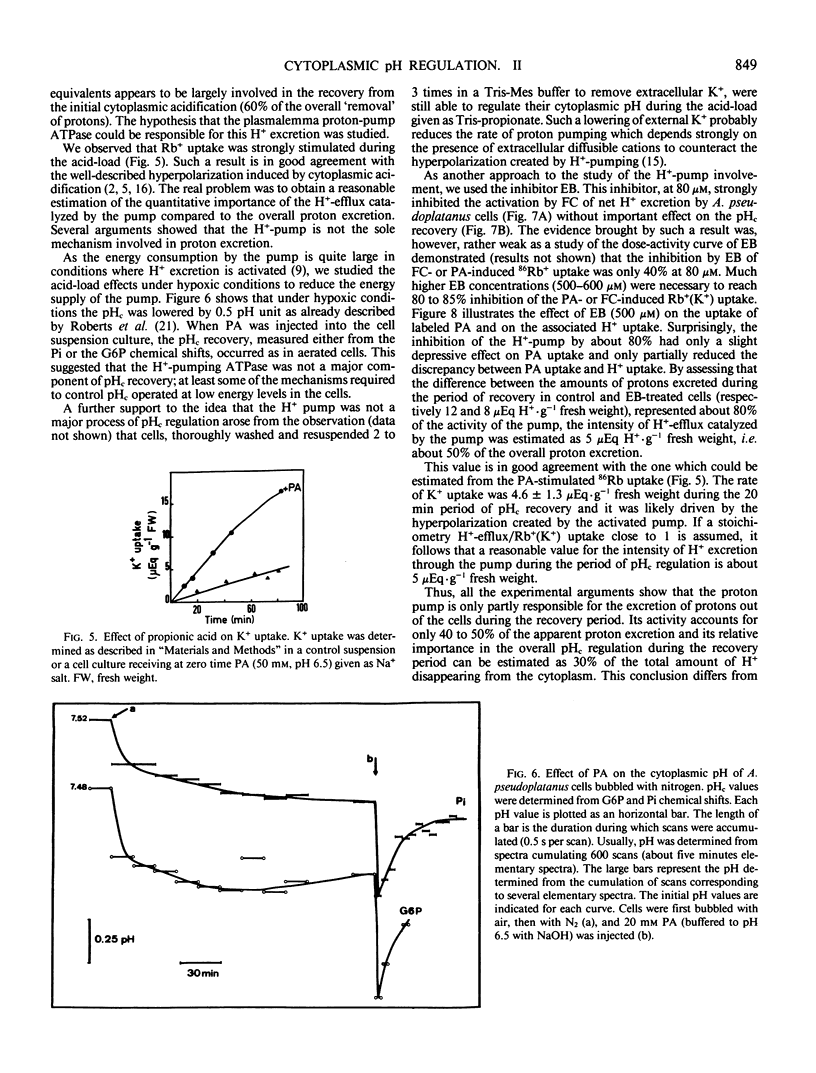
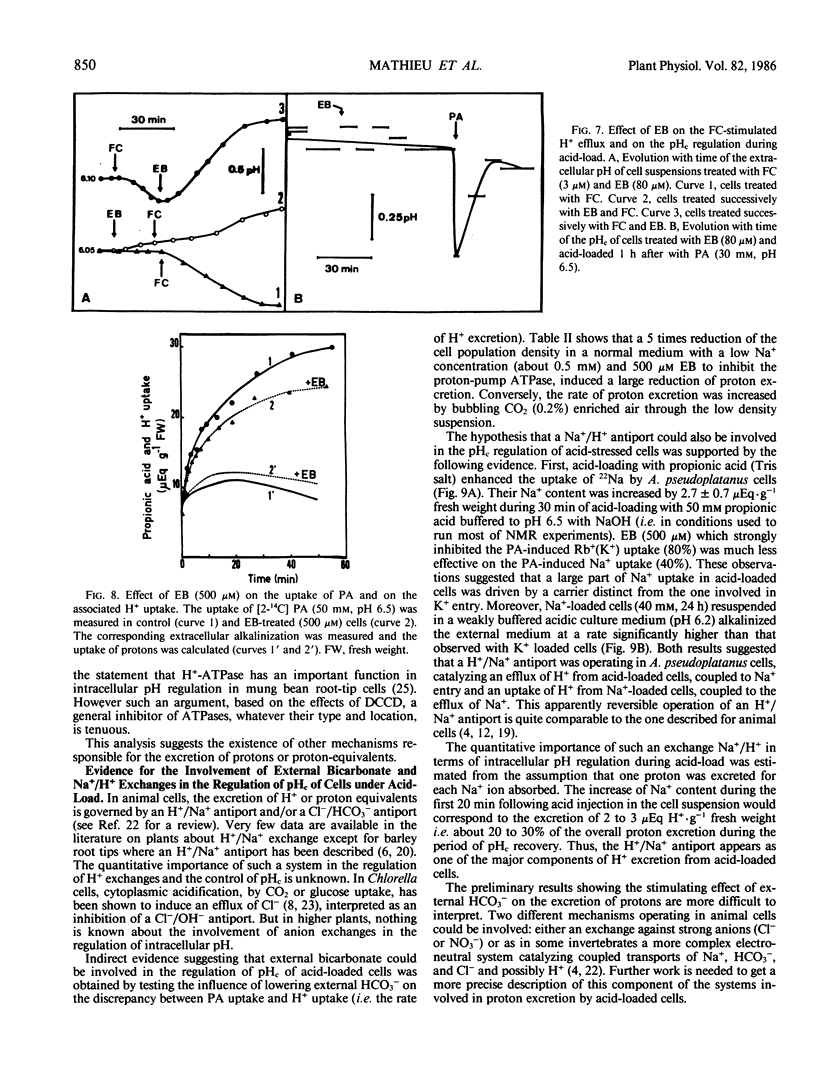
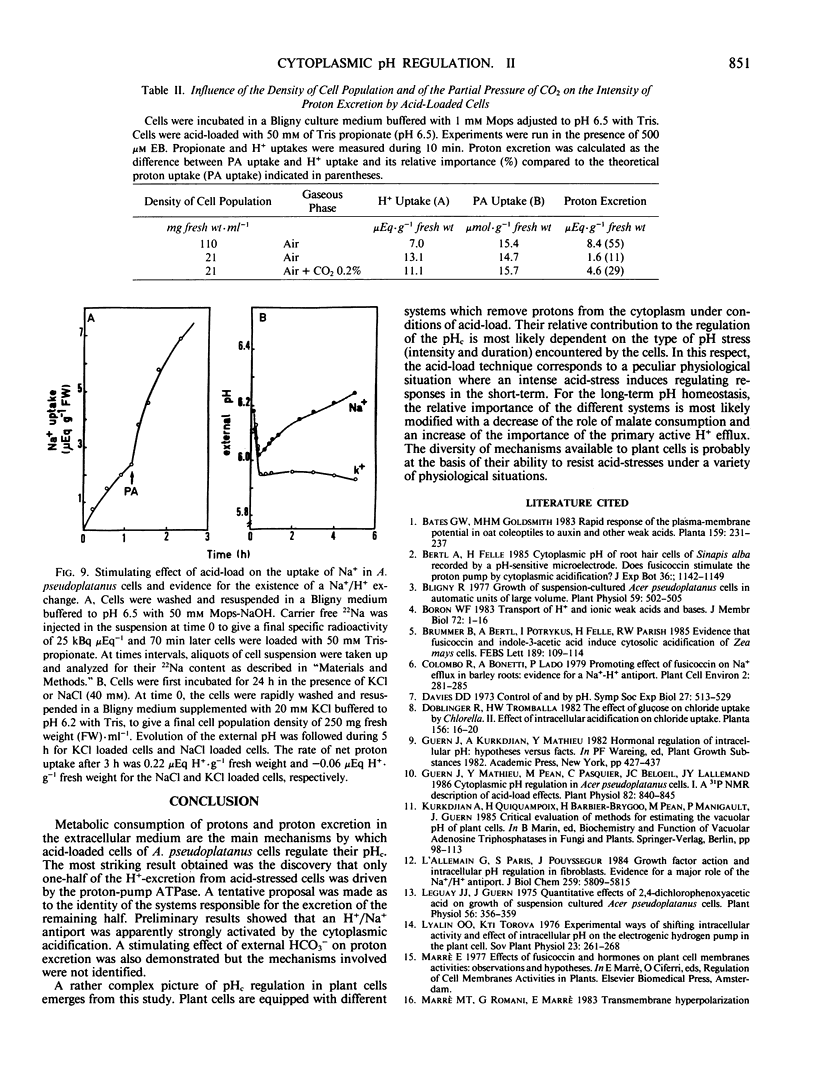

Selected References
These references are in PubMed. This may not be the complete list of references from this article.
- Bligny R. Growth of Suspension-cultured Acer pseudoplatanus L. Cells in Automatic Culture Units of Large Volume. Plant Physiol. 1977 Mar;59(3):502–505. doi: 10.1104/pp.59.3.502. [DOI] [PMC free article] [PubMed] [Google Scholar]
- Boron W. F. Transport of H+ and of ionic weak acids and bases. J Membr Biol. 1983;72(1-2):1–16. doi: 10.1007/BF01870311. [DOI] [PubMed] [Google Scholar]
- Davies D. D. Control of and by pH. Symp Soc Exp Biol. 1973;27:513–529. [PubMed] [Google Scholar]
- Guern J., Mathieu Y., Pean M., Pasquier C., Beloeil J. C., Lallemand J. Y. Cytoplasmic pH Regulation in Acer pseudoplatanus Cells: I. A P NMR Description of Acid-Load Effects. Plant Physiol. 1986 Nov;82(3):840–845. doi: 10.1104/pp.82.3.840. [DOI] [PMC free article] [PubMed] [Google Scholar]
- L'Allemain G., Paris S., Pouysségur J. Growth factor action and intracellular pH regulation in fibroblasts. Evidence for a major role of the Na+/H+ antiport. J Biol Chem. 1984 May 10;259(9):5809–5815. [PubMed] [Google Scholar]
- Leguay J. J., Guern J. Quantitative Effects of 2,4-Dichlorophenoxyacetic Acid on Growth of Suspension-cultured Acer pseudoplatanus Cells. Plant Physiol. 1975 Sep;56(3):356–359. doi: 10.1104/pp.56.3.356. [DOI] [PMC free article] [PubMed] [Google Scholar]
- Roos A., Boron W. F. Intracellular pH. Physiol Rev. 1981 Apr;61(2):296–434. doi: 10.1152/physrev.1981.61.2.296. [DOI] [PubMed] [Google Scholar]
- Sanders D., Slayman C. L. Control of intracellular pH. Predominant role of oxidative metabolism, not proton transport, in the eukaryotic microorganism Neurospora. J Gen Physiol. 1982 Sep;80(3):377–402. doi: 10.1085/jgp.80.3.377. [DOI] [PMC free article] [PubMed] [Google Scholar]


